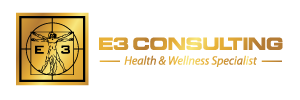How-To: Boost Workplace Productivity With Technology

Understanding and enhancing workplace productivity is crucial in an era where business efficiency is not just desired but required. For business owners, the goal is clear: optimize performance in every aspect of operations. This comprehensive guide will delve into the nuances of workplace productivity and how technology, coupled with ergonomic expertise from E3 Consulting, can elevate it to new heights.
What is Productivity in the Workplace?
At its core, workplace productivity measures how effectively a business converts input into output. This concept transcends quantitative mere production; it’s about maximizing the quality of work while minimizing resources expended, whether time, manpower, or finances.
In a broader sense, productivity in the workplace is a reflection of operational efficiency. It’s a gauge of how well employees utilize resources and how seamlessly processes flow. High workplace productivity is often synonymous with streamlined processes, optimized time management, and a skilled and motivated workforce.
Incorporating ergonomic principles into workplace design significantly influences productivity. An environment that supports employees’ physical and mental well-being through ergonomic tools and practices paves the way for enhanced focus, reduced absenteeism, and, ultimately, higher productivity levels.
Why is Productivity Important in the Workplace?
The significance of workplace productivity extends beyond mere numbers. It’s a vital component of a business’s overall health and success. Higher productivity levels translate into cost-effectiveness, increased profitability, and competitive advantage in the market.
From an internal perspective, a productive environment fosters employee morale and job satisfaction. When employees feel they can accomplish their tasks efficiently and comfortably, it boosts their engagement and loyalty to the company. This, in turn, reduces turnover rates and the costs associated with hiring and training new staff.
Externally, high productivity is often mirrored in customer satisfaction. Efficient operations allow faster, higher-quality service or product delivery, enhancing customer experience and fostering long-term business relationships.
Examples of Productivity in the Workplace
- A marketing team utilizes data analytics tools to streamline their campaign analysis, leading to quicker turnaround times and more targeted strategies.
- A manufacturing unit integrates ergonomic equipment, reducing worker fatigue and increasing output quality.
- An HR department employs AI-driven software for recruitment processes, enhancing the efficiency and quality of new hires.
How to Measure Productivity in the Workplace
Measuring productivity can be complex, encompassing various factors and differing across industries. Effective measurement techniques often involve a combination of quantitative and qualitative assessments.
Quantitative measures include analyzing the output in a given period against the resources used. This could involve financial metrics, production volumes, or sales figures. On the other hand, qualitative measures assess the quality of work produced, employee satisfaction, and customer feedback.
Technology plays a crucial role in these assessments. Productivity tracking and analytics software offer detailed insights into how employees spend their time, the efficiency of different processes, and areas where improvements are needed. This data-driven approach enables businesses to make informed decisions to enhance their productivity.
How to Improve Workplace Productivity
Boosting workplace productivity is multifaceted, requiring a blend of technology, ergonomic design, and organizational strategy. Here are some expanded strategies:
- Implement Advanced Technology Solutions: The adoption of cutting-edge tools like AI, machine learning, and automation can revolutionize how tasks are performed, leading to significant time and resource savings.
- Focus on Comprehensive Ergonomic Design: Consider the overall workspace design beyond basic ergonomic furniture. This includes noise level management, air quality, and lighting, all of which can impact employee productivity.
- Encourage Balanced Work Breaks: Utilize technology to promote healthy work-break habits. Apps and software can remind employees to take breaks at optimal times, reducing fatigue and maintaining productivity.
- Offer In-depth Training and Support: Ensure employees are well-versed in new technologies and ergonomic practices. Regular workshops, webinars, and training sessions can keep them updated and skilled.
- Optimize Workflow Processes with Smart Technology: Leverage technology to refine workflows. Introducing digital task management systems, utilizing cloud storage for easy access to information, and automating repetitive tasks can streamline operations and reduce the scope for errors.
- Foster a Culture of Continuous Improvement: Encourage a workplace culture where feedback is valued and acted upon. Use technology to gather employee suggestions and monitor the impact of changes made. This continuous loop of feedback and improvement can drive long-term productivity gains.
- Incorporate Remote Working Technologies: In today’s digital age, flexibility in the workplace is key. Implementing technologies that support remote work, such as virtual meeting software and online collaboration tools, can maintain productivity irrespective of physical location.
- Health and Wellness Programs: Implementing health and wellness programs, supported by technology like fitness tracking apps and online wellness resources, can improve employee well-being, reduce stress, and enhance cognitive function, all contributing to higher productivity.
Boost Workplace Productivity With E3 Consulting
Enhancing workplace productivity is a dynamic and ongoing process. It requires a strategic blend of technological integration and ergonomic optimization. By creating an environment conducive to efficient work practices and employee well-being, businesses can achieve significant gains in productivity.
E3 Consulting is a market leader in this effort, offering unmatched expertise in ergonomic solutions and workplace productivity enhancement. By collaborating with E3 Consulting, businesses can transform their workspaces into efficiency and employee satisfaction models, leading to tangible improvements in engagement, job satisfaction, and financial performance.
Are you ready to take your business’s productivity to the next level? Contact E3 Consulting today and embark on a journey towards a more efficient, healthier, and productive workplace.

